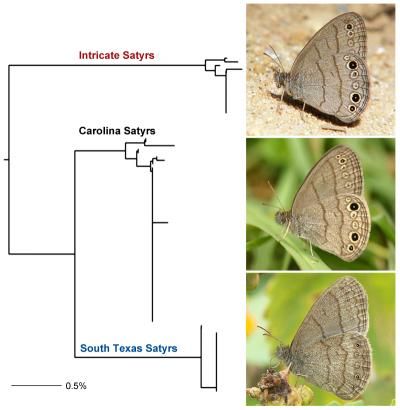Two New Butterfly Species Discovered in US

When it comes to identifying butterfly species, looks can be deceiving, as the discovery of two new species in Texas shows.
Researchers were trying to understand the genetic sequencing of butterflies they thought belonged to the same species of the Carolina Satyr, discovered in 1973, when they noticed something strange: Although the butterflies they were studying looked the same and had identical flying patterns, their DNA was different. At first, the scientists thought it was a mistake, but they later realized they actually had been studying two different species, one of which had not been previously identified.
The researchers called the new species the Intricate Satyr.
The two species also differed in the size and color of their genitals: Both male and female Intricate Satyrs had darker and smaller genitals than those on the Carolina Satyr.
The discovery of the Intricate Satyr prompted the researchers to examine the DNA makeup and genitalia of Satyr populations in southern Texas. This research revealed yet another new species of butterfly, which the researchers dubbed the South Texas Satyr.
The South Texas Satyr turned out to be closely related to the Carolina Satyr. However, the Intricate Satyr is evolutionarily distant from both the South Texas Satyr and the Carolina Satyr. In other words, the lineage of the Intricate Satyr diverged from that of the Carolina Satyr and the South Texas Satyr millions of years ago, so there are significant genetic differences between the Intricate Satyr and the other two species.
Discoveries of new butterfly species in the eastern United States are very rare, as this region has been thoroughly explored by scientists and butterfly enthusiasts, said study author Nick Grishin, a professor at the University of Texas Southwestern.
Sign up for the Live Science daily newsletter now
Get the world’s most fascinating discoveries delivered straight to your inbox.
It's more common to find new butterfly species in South America, Grishin said, because the continent's butterfly populations haven't been examined as thoroughly. Not to mention, "There are at least eight times more species in South America than in the U.S.," he told Live Science.
The study announcing the discovery of the new species was published Feb. 12 in the journal ZooKeys.
Follow us @livescience, Facebook & Google+. Original article on Live Science.












